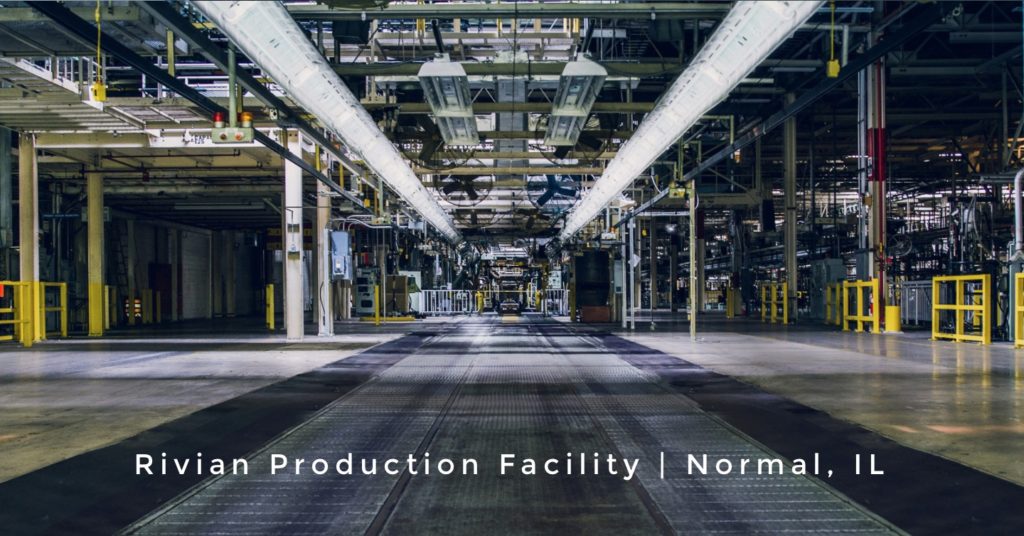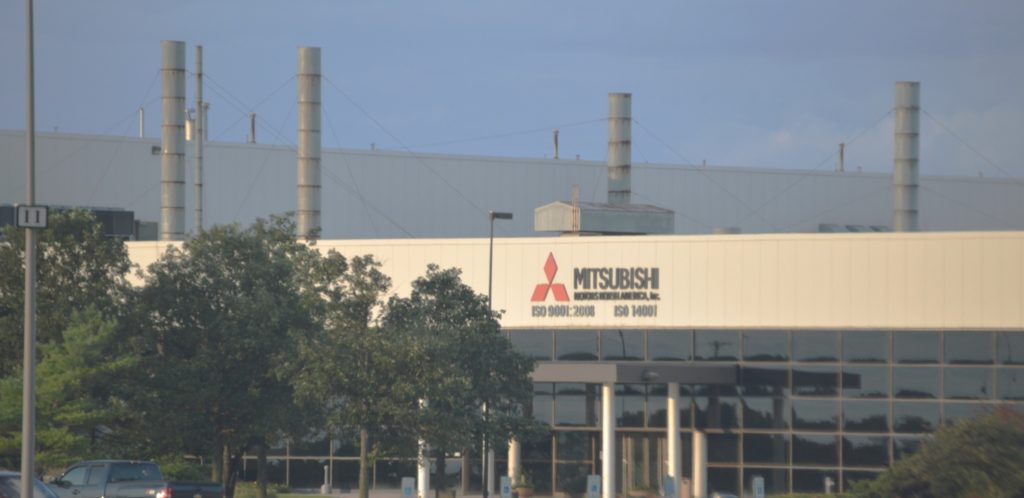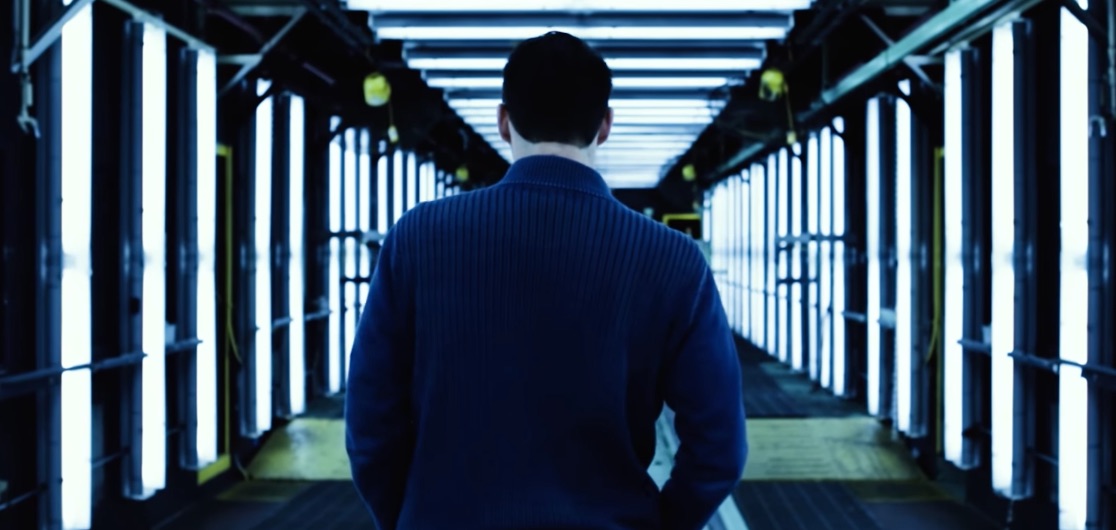
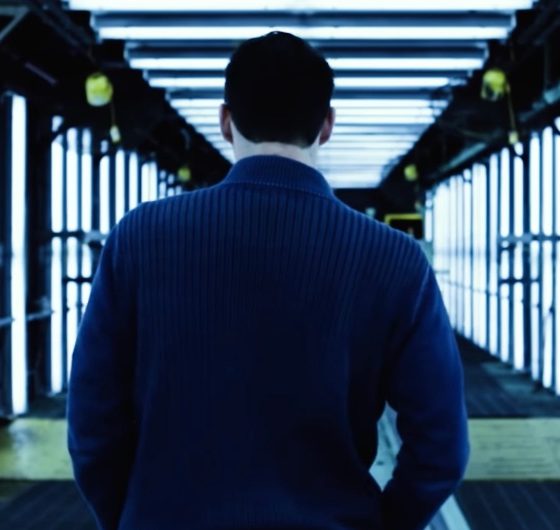
News
Mysterious electric vehicle startup, Rivian Automotive closes deal on massive manufacturing facility in Illinois
Michigan-based electric vehicle startup, Rivian Automotive, just closed its purchase of the Mitsubishi Motors North America facility in Normal, Illinois. Records show that the factory was first purchased by liquidation firm, Maynards Industries, in June of 2016 for $2.5M, not including machinery, before Rivian’s recent acquisition for an undisclosed amount. The electric car upstart plans to invest $40.5 million into the factory over the next five years and begin vehicle production in 2019.
Rivian Automotive first began discussions with the town and factory owner in mid-September, before announcing on December 9 that they had entered into an agreement to purchase the facility. The Town of Normal gave the company an incentive package, including a five-year tax abatement and a $1 million grant contingent upon the hiring of approximately 1,000 workers and a $175 million investment into the site through 2024.
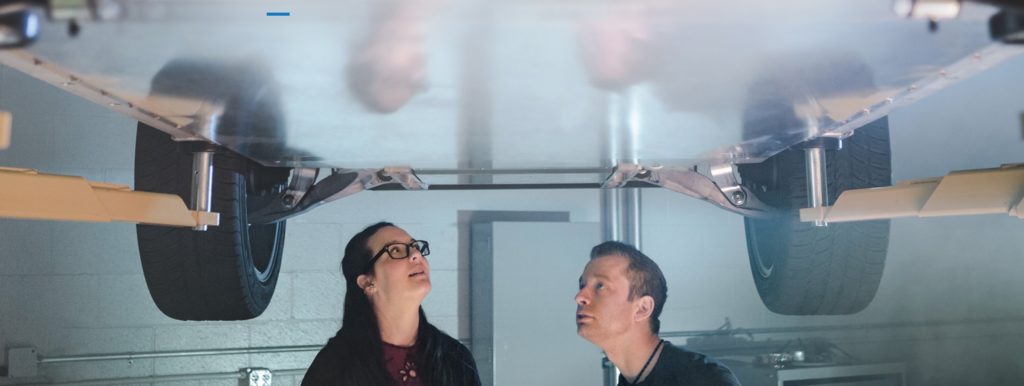
(Photo: Rivian)
“We had all but given up hope on a buyer for the Mitsubishi Plant,” Mark Peterson, Town of Normal City Manager, said in a report to the Mayor and the Town Council. Based on records received from the Town of Normal, it is evident that city officials spent countless hours working on the deal.
“As a community, we are thrilled that Rivian has chosen us. It is incredibly rare that a major manufacturing facility in Midwest shutters and then finds new life,” said Town of Normal Mayor Chris Koos in a comment to Teslarati.
The company was founded in 2009 as Mainstream Motors in Florida and later changed its name to Avera Automotive, before becoming Rivian Automotive in 2011. They relocated their operations to Detroit Michigan in Fall 2015 after receiving financial backing from an undisclosed investor. Until today, Rivian Automotive has been operating in stealth mode. The company has launched a newly refreshed website announcing their presence within the electric car space.
Rivian’s new website claims, “Rivian is developing a flexible electric platform that will underpin our launch portfolio. Our vehicles are being optimized around the electric architecture to deliver outstanding performance, efficiency, packaging, durability and safety.”
Mitsubishi Motors built the facility in 1988 in a joint partnership with Chrysler Corporation and then became the sole operator of the plant in 1991. The 2.4 million square-foot plant is capable of producing over 240,000 vehicles per year and sits on over 500 acres of land. In 2012, Mitsubishi invest over $100 million into the plant to produce the new Mitsubishi Outlander Sport. Due to disappointing sales, Mitsubishi announced the closure in August 2015 and ceased operations in May 2016.
The chances of success are slim in the automotive sector, but Rivian’s acquisition of the plant gives them a competitive advantage over others. While would-be competitor Faraday Future struggles to finance construction on their North Las Vegas factory, Rivian already has a manufacturing facility that requires relatively little capital to bring back to a production-ready state.
https://www.youtube.com/watch?v=TloizFWADNw
Rivian Automotive was unable to be reached for comment.
The Bloomington-Normal Economic Development Council did not return our request for comment.

News
Tesla FSD fleet is nearing 7 billion total miles, including 2.5 billion city miles
As can be seen on Tesla’s official FSD webpage, vehicles equipped with the system have now navigated over 6.99 billion miles.

Tesla’s Full Self-Driving (Supervised) fleet is closing in on almost 7 billion total miles driven, as per data posted by the company on its official FSD webpage.
These figures hint at the massive scale of data fueling Tesla’s rapid FSD improvements, which have been quite notable as of late.
FSD mileage milestones
As can be seen on Tesla’s official FSD webpage, vehicles equipped with the system have now navigated over 6.99 billion miles. Tesla owner and avid FSD tester Whole Mars Catalog also shared a screenshot indicating that from the nearly 7 billion miles traveled by the FSD fleet, more than 2.5 billion miles were driven inside cities.
City miles are particularly valuable for complex urban scenarios like unprotected turns, pedestrian interactions, and traffic lights. This is also the difference-maker for FSD, as only complex solutions, such as Waymo’s self-driving taxis, operate similarly on inner-city streets. And even then, incidents such as the San Francisco blackouts have proven challenging for sensor-rich vehicles like Waymos.
Tesla’s data edge
Tesla has a number of advantages in the autonomous vehicle sector, one of which is the size of its fleet and the number of vehicles training FSD on real-world roads. Tesla’s nearly 7 billion FSD miles then allow the company to roll out updates that make its vehicles behave like they are being driven by experienced drivers, even if they are operating on their own.
So notable are Tesla’s improvements to FSD that NVIDIA Director of Robotics Jim Fan, after experiencing FSD v14, noted that the system is the first AI that passes what he described as a “Physical Turing Test.”
“Despite knowing exactly how robot learning works, I still find it magical watching the steering wheel turn by itself. First it feels surreal, next it becomes routine. Then, like the smartphone, taking it away actively hurts. This is how humanity gets rewired and glued to god-like technologies,” Fan wrote in a post on X.
News
Tesla starts showing how FSD will change lives in Europe
Local officials tested the system on narrow country roads and were impressed by FSD’s smooth, human-like driving, with some calling the service a game-changer for everyday life in areas that are far from urban centers.

Tesla has launched Europe’s first public shuttle service using Full Self-Driving (Supervised) in the rural Eifelkreis Bitburg-Prüm region of Germany, demonstrating how the technology can restore independence and mobility for people who struggle with limited transport options.
Local officials tested the system on narrow country roads and were impressed by FSD’s smooth, human-like driving, with some calling the service a game-changer for everyday life in areas that are far from urban centers.
Officials see real impact on rural residents
Arzfeld Mayor Johannes Kuhl and District Administrator Andreas Kruppert personally tested the Tesla shuttle service. This allowed them to see just how well FSD navigated winding lanes and rural roads confidently. Kruppert said, “Autonomous driving sounds like science fiction to many, but we simply see here that it works totally well in rural regions too.” Kuhl, for his part, also noted that FSD “feels like a very experienced driver.”
The pilot complements the area’s “Citizen Bus” program, which provides on-demand rides for elderly residents who can no longer drive themselves. Tesla Europe shared a video of a demonstration of the service, highlighting how FSD gives people their freedom back, even in places where public transport is not as prevalent.
What the Ministry for Economic Affairs and Transport says
Rhineland-Palatinate’s Minister Daniela Schmitt supported the project, praising the collaboration that made this “first of its kind in Europe” possible. As per the ministry, the rural rollout for the service shows FSD’s potential beyond major cities, and it delivers tangible benefits like grocery runs, doctor visits, and social connections for isolated residents.
“Reliable and flexible mobility is especially vital in rural areas. With the launch of a shuttle service using self-driving vehicles (FSD supervised) by Tesla in the Eifelkreis Bitburg-Prüm, an innovative pilot project is now getting underway that complements local community bus services. It is the first project of its kind in Europe.
“The result is a real gain for rural mobility: greater accessibility, more flexibility and tangible benefits for everyday life. A strong signal for innovation, cooperation and future-oriented mobility beyond urban centers,” the ministry wrote in a LinkedIn post.
News
Tesla China quietly posts Robotaxi-related job listing
Tesla China is currently seeking a Low Voltage Electrical Engineer to work on circuit board design for the company’s autonomous vehicles.

Tesla has posted a new job listing in Shanghai explicitly tied to its Robotaxi program, fueling speculation that the company is preparing to launch its dedicated autonomous ride-hailing service in China.
As noted in the listing, Tesla China is currently seeking a Low Voltage Electrical Engineer to work on circuit board design for the company’s autonomous vehicles.
Robotaxi-specific role
The listing, which was shared on social media platform X by industry watcher @tslaming, suggested that Tesla China is looking to fill the role urgently. The job listing itself specifically mentions that the person hired for the role will be working on the Low Voltage Hardware team, which would design the circuit boards that would serve as the nervous system of the Robotaxi.
Key tasks for the role, as indicated in the job listing, include collaboration with PCB layout, firmware, mechanical, program management, and validation teams, among other responsibilities. The role is based in Shanghai.
China Robotaxi launch
China represents a massive potential market for robotaxis, with its dense urban centers and supportive policies in select cities. Tesla has limited permission to roll out FSD in the country, though despite this, its vehicles have been hailed as among the best in the market when it comes to autonomous features. So far, at least, it appears that China supports Tesla’s FSD and Robotaxi rollout.
This was hinted at in November, when Tesla brought the Cybercab to the 8th China International Import Expo (CIIE) in Shanghai, marking the first time that the autonomous two-seater was brought to the Asia-Pacific region. The vehicle, despite not having a release date in China, received a significant amount of interest among the event’s attendees.
